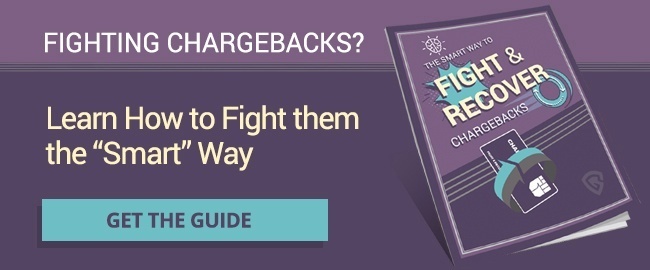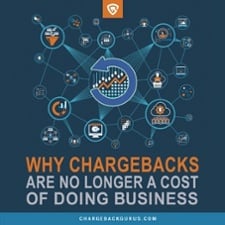Reducing the Risk of Digital Goods Chargebacks
It wasn’t that long ago when buying a special piece of furniture to house your record collection would have been considered a totally normal thing to do. Now, even the most dedicated audiophile’s music library could probably fit on a thumb drive—if it isn’t streaming from the cloud. Digital goods are on the rise everywhere, replacing physical media and creating entirely new product categories.
Unfortunately for the merchants who sell them, the ephemeral nature of digital goods creates particular vulnerabilities to fraud and chargebacks. What do merchants need to know about anticipating, preventing, and fighting digital goods chargebacks?
Fraud is a growing problem for online merchants, whether it comes in the form of anonymous credit card fraud or more direct assaults like friendly fraud or refund fraud. Fraud and chargebacks inevitably go hand in hand, either as a response to true fraud or as the key element in a friendly fraud scheme.
Merchants can fight fraudulent chargebacks by providing evidence that the cardholder is making false claims, but that’s a little easier to do when physical goods are involved and you can provide tangible proof that a product was delivered and signed for.
Digital goods and virtual products—whether that means software, games, digital media, in-app purchases, or anything else that exists as a series of ones and zeroes—can be elusive when it comes to providing compelling proof that you delivered what the customer ordered.
There are certain chargeback scenarios that only apply to digital goods transactions, and merchants who sell digital goods need to understand that they have an increased exposure to chargebacks and must take extra steps to protect themselves.
What are Digital Goods Chargebacks?
A digital goods chargeback is any chargeback involving a transaction that was made to purchase digital goods or services. This purchase may involve an actual transfer of property, such as a downloadable ebook or software program, or the cardholder may be purchasing only the rights to access or view the goods, as would be the case with subscription-based streaming services.
When one of these transactions gets disputed, it becomes a digital goods chargeback.
Digital goods transactions frequently correlate with high chargeback rates. This is partly because fraudsters understand and purposely exploit the inherent vulnerabilities of digital goods, but it may be fair to say that the average consumer views digital goods as less “real” or important than physical goods, which would explain the high rates of friendly fraud.
Why are Digital Goods So Vulnerable to Chargebacks?
 Where true fraud is taking place, digital goods may be more attractive than physical goods because they can be easier to intercept and resell than physical goods.
Where true fraud is taking place, digital goods may be more attractive than physical goods because they can be easier to intercept and resell than physical goods.
When a fraudster makes a purchase on an ecommerce site with a stolen card, they still have to find a way to convert that fraudulent purchase into some cash value.
One way to do that is to change the shipping address to a mail drop that the fraudster can access, but unusual shipping requests tend to tip merchants off that fraud may be occurring. Many digital goods, on the other hand, can be downloaded immediately after purchase and then resold on the dark web or other illegal markets.
However, lots of merchants find that the real problem with digital goods is friendly fraud.
Customers who experience buyer’s remorse or dissatisfaction with the purchase may claim that they never received it, because who can really prove otherwise where intangible virtual goods are concerned?
Recurring subscription charges also seem to attract a high number of chargebacks. Sometimes customers genuinely forget signing up, but quite often they’ll just dispute a recurring charge if they find it too difficult to cancel the service directly with the merchant.
The friendly fraud variant known as “family fraud” also shows up often with digital goods chargebacks. It’s an all-too-familiar scenario by now: the cardholder gives their young child a phone or tablet to keep them occupied for a few minutes, the child starts playing a game, and when the cardholder takes their device back they find out that the kid just made hundreds of dollars of in-app purchases. Whether the story is true or not, these scenarios are no basis for a valid chargeback—but that doesn’t stop cardholders from trying.
How Can Merchants Prevent Digital Goods Chargebacks?
As with any chargeback, prevention is always a multi-front battle. True fraud chargebacks must be prevented ahead of time with anti-fraud tools and careful screening, while friendly fraud chargebacks can only be fought after the fact through the chargeback representment process.
The following tips can help merchants dealing with digital goods chargebacks:
- Carefully document your digital goods transactions. Maintain copies of all customer correspondence, as well as server logs that prove that they downloaded or used the digital goods they purchased.
- Clearly state your terms of sale and refund policy to your customers before finalizing any purchase. Provide them with a clear pathway to resolve any disputes or concerns they might have directly with you, the merchant.
- Use state-of-the-art anti-fraud tools, along with basic protections like AVS and CVV matching, to detect and filter out credit card fraud.
- Require customers to validate or register their digital goods before they can be used.
- Make sure that any subscriptions or recurring billings can be easily cancelled through a simple online form.
- Offer excellent customer service, reachable 24/7, to help customers resolve whatever issues they’re having.
Conclusion
Selling digital goods comes with a greater risk of incurring chargebacks, and there’s no getting around that essential truth. Digital goods merchants have no choice but to take whatever extra steps may be necessary to protect themselves, preserve the documents and evidence that might help their case in a friendly fraud dispute, and fight back as necessary.
Digital goods merchants who are overwhelmed by fraudulent chargebacks and struggling to keep their chargeback rate down should know that you never have to go it alone.
When an unmanageable chargeback problem is grinding you down, remember that there are always experts out there who can help you develop a comprehensive and effective strategy for avoiding and beating your chargebacks.
Thanks for following the Chargeback Gurus blog. Feel free to submit topic suggestions, questions or requests for advice to: win@chargebackgurus.com.



